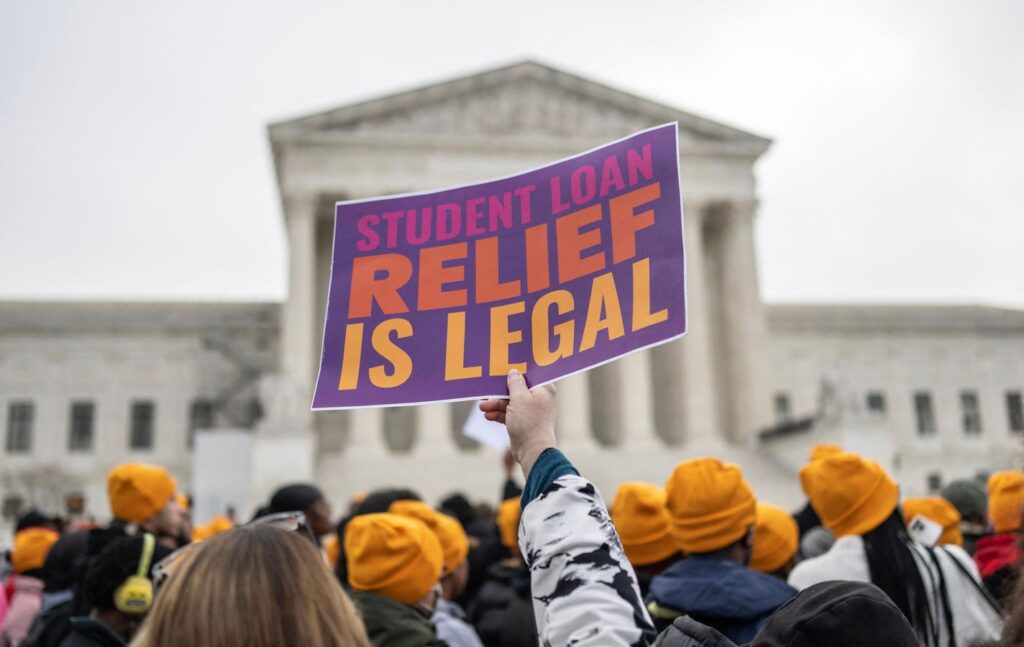In recent legal developments, President Joe Biden’s student debt relief initiative, particularly the SAVE plan, faces significant challenges as a federal appeals court has indicated a tendency towards its rejection. The SAVE plan aims to lower payments for millions of borrowers while providing pathways to loan forgiveness, but a ruling from the 8th Circuit Court of Appeals could not only strike down this initiative but also potentially jeopardize older income-driven repayment (IDR) programs. The legal challenge originates from Republican-led states, expressing that Biden’s administration has overstepped its bounds by implementing the SAVE plan without proper authorization from Congress.
The 8th Circuit is presently deliberating on the legality of the SAVE plan, following an August injunction that halted its implementation amid legal scrutiny. The SAVE plan’s framework builds on prior IDR programs that hinge repayment obligations on borrowers’ income levels, with forgiveness options available after a specified term. However, the SAVE plan stands out by offering reduced monthly payments and accelerated forgiveness benefits. Previous IDR programs include the Income-Contingent Repayment plan, Pay As You Earn, and others that established the groundwork for repayment and forgiveness terms, yet the states argue that Congress has never explicitly approved the expansive benefits of the SAVE plan.
Opponents of the SAVE plan, particularly the states involved in the lawsuit, contest its foundational legality on the grounds that Congress failed to designate the specific provisions included within the initiative. They notably highlight benefits such as income exemption thresholds, interest subsidies, and the shortened forgiveness timeline as beyond what was intended within federal law. The Biden administration contends that these features align with longstanding regulatory frameworks established over nearly three decades and maintain a consistent interpretation of the legislative intent to provide student loan relief and forgiveness.
The implications of the 8th Circuit’s decisions and interpretations are poised to influence the broader discourse surrounding student loan forgiveness and IDR plans particularly as observed during a recent court hearing. Judges displayed skepticism regarding the SAVE plan, with key questions posed regarding the nature of repayment if it ends with zero payments followed by forgiveness. This led to an atmosphere of uncertainty surrounding the legal framing of what constitutes a repayment plan, which could significantly redefine borrower rights and benefits under existing IDR frameworks.
For the borrowers already engaged with the SAVE plan, the commencement of a forbearance period has been established where they will not incur additional billing or interest accumulation, though this period does not count towards their forgiveness timelines under any IDR plans. Roughly eight million individuals are affected by this forbearance, causing turmoil within the student loan system with the Education Department pausing IDR and Direct consolidation applications, hampering new graduate enrollments and increasing the risk of default for those unable to meet standard repayment demands.
Despite ongoing complications stemming from the temporary injunction, the Education Department is anticipating a resumption of processing for IDR applications soon, while some borrowers may have the option to transition to the Income-Based Repayment plan. However, such changes may complicate borrower situations further. There remains a sense that the judicial process regarding the SAVE plan will evolve toward the Supreme Court, which could either uphold or overturn previous interpretations concerning mass student loan forgiveness. As the situation unfolds, borrowers remain in a precarious position, awaiting clarity on the fate of student debt relief initiatives designed to ease their financial burdens.

